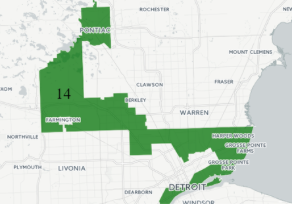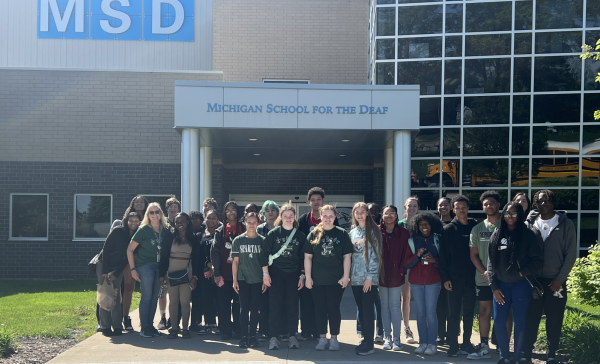Midterm 2018 Wrap-up

November 12, 2018
Did you miss the elections last Tuesday? Do you know the winners, and what proposals passed? Here is spectrum’s guide to everything you need to know about the midterms of 2018.
To begin with the school board, the incumbents won the race for the West Bloomfield Board of Education. Challenger David Flaisher fell to Carol Finkelstein, Julie Beaty, and Nelson Hersh as they captured the three open seats. Finkelstein and Hersh took 27% of the vote while Beaty earned a close 26%. Flaisher’s 17% placed him in 4th without a position on the Board.
Moving towards statewide decisions, Michigan’s first proposal was one that has been a long and patient wait for many. It passed by 56%, making Michigan the 10th state to legalize recreational marijuana (for those over the age of twenty one.) While many are happy about the decision, it didn’t happen overnight, and is not officially legal yet. Additionally, counties and cities can ultimately choose whether they want it to be legal in their area.
Regarding proposal two, Gerrymandering is the drawing of district lines to benefit one political party. Every 10 years, when the census is taken, these lines are redrawn by the state legislature which leaves them subject to the party in power. Gerrymandering is an issue in Michigan as evident in the unique shape of District 14. The redistricting process changed as Proposal 2 passed with 61% of the votes. Now, a 13-member, nonpartisan commission will draw the district lines based on the population, not political affiliation.
Michigan’s third proposal was regarding:
- The protection of the right to vote a secret ballot
- The insurance that military service members and overseas voters can obtain ballots
- The option for Michigan residents to vote straight party
- The process of automatically registering citizens to vote at the Secretary of State’s office unless the citizen declines
- The allowance of a citizen to register to vote anytime with proof of residency
- The ability to provide all registered voters access to an absentee ballot for any reason
While every function of this proposal played a large part, most were focused on the ability for citizen’s to be able to register to vote whenever they want. For residents, this is huge, allowing the opportunity to allow people who in years past may have missed the deadline. As for politicians, this policy will definitely change their view on how they see the outcomes of their future elections. Because of this policy, candidates for future elections may be out of luck when trying to predict the race, as some may not even register to vote until the day of. Expect to see lots more commercials and canvassing.
In District 14 of the US House of Representatives, where West Bloomfield High School is located, Democrat Brenda Lawrence kept her seat from challenger Marc Herschfus. Lawrence had a comfortable win taking about 81% of the vote compared to 17% earned by Herschfus. Lawrence will serve in the House for her 3rd term.
With almost all of the precincts reported, incumbent Debbie Stabenow beat Republican John James in a close race for a seat in the US Senate. The margin was about 52% for Stabenow to James’ 46%. Most of the counties showed red but the highly populated areas of Detroit, Kalamazoo, Muskegon, and Marquette went blue and won the race for Stabenow. The Republican party had high hopes for veteran James but the Michigan Senate seat will stay blue for Stabenow’s fourth term.
With 1 seats undeclared and 2 belonging to other parties, the Republicans keep control of the US Senate with 51 seats compared to the Democrats’ 46. The Democrats hoped that the unrest of liberals within America after the 2016 election would have enough force to flip the power of the Senate. Although, the Republicans proved their strength as they kept control and even gained 2 seats. The race in Texas is a prime example of the push of the Democrats. Beto O’Rourke, the liberal candidate for the Senate, was seen by Democrats as the charismatic person needed to flip the Republican seat. Videos of O’Rourke speaking on went viral on Twitter. The candidates were neck and neck but social media fame was not enough to beat the Republican incumbent Ted Cruz. Cruz won by a slim margin of about 51%. Even though O’Rourke did not win, he proved that the traditionally red state was open for liberal change. This seemed to be the theme with many Senate races; Democrats did not win but were much closer than 2 years ago. It is important to take into consideration that only one third of the Senate was up for reelection. If the entire Senate was open, it is possible that more seats could have been flipped in the “blue wave.”
In the relation to the “blue wave,” former state rep, and state senator, Gretchen Whitmer won with 53%, making her the second woman to serve as the governor of Michigan. Many women were in fact elected into positions on Tuesday, and they were representatives of both parties, and all races. Also, Michigan elected a democratic woman for every statewide office, meaning: governor, U.S. senator, attorney general and secretary of state.
The election of the US House of Representatives was a different story. With 13 seats yet to be declared, the Democrats won control of the House as they earned 225 over the Republican’s 197. A major change occurred as liberal voters allowed the Democrats to capture 30 seats from the Republicans. Close to WBHS, in a tight race in District 11, Haley Stevens won 52% of the votes, beating Lena Epstein and taking a Republican seat. Across the country, many more races similar to this one took place. The “blue wave” was not impactful enough to flip the power in the Senate but it certainly changed the control of the House.
In conclusion the 2018 Midterms were crazy. A surge of new voters pulled through, women dominated the election, and new changes were made to our process that have been in the works for years. Although the elections may have not gone everyone’s way, it’s always important to use our right to vote!











